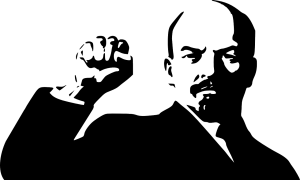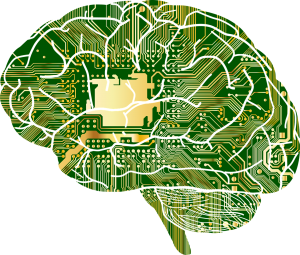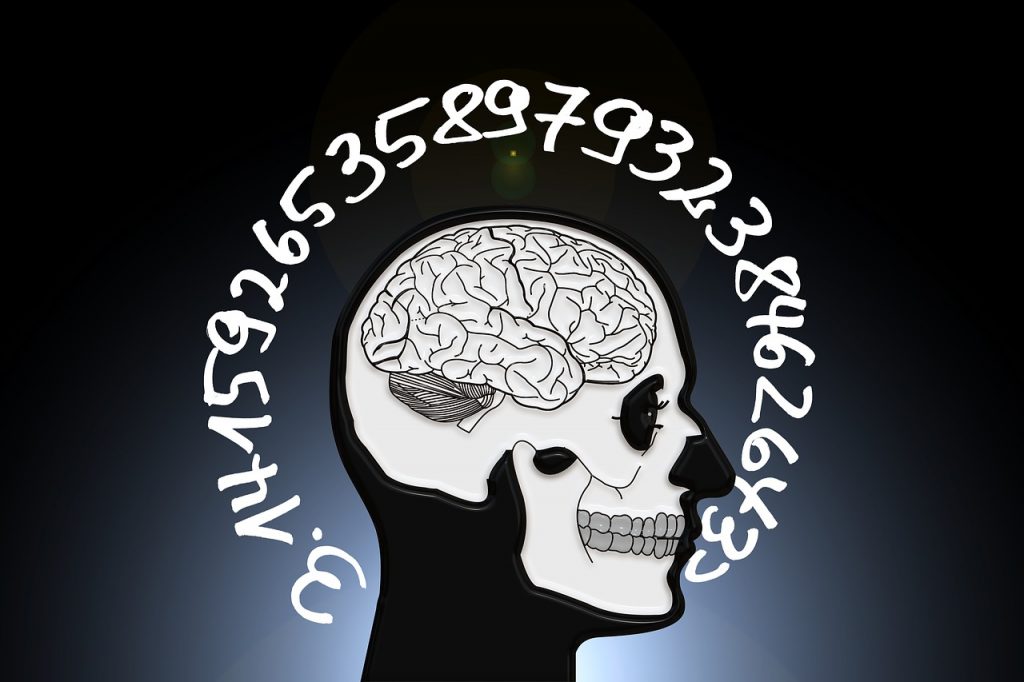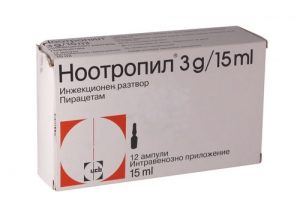
I considered asking forgiveness for the grotesque image above, but, to be honest, I’m not sorry. That’s grade-A Soviet propaganda right there–and, frankly, if that doesn’t inspire a call to arms in you, then I feel sorry for you.
Plus, it’s fitting for its irony: Piracetam was developed to alter the mind, potentially with sinister intentions of controlling the mind itself. Yet, in reality, the mind-altering aspects of piracetam seem to bolster the mind, giving it more self-control to act at peak cognitive levels.
That’s called Power to the People, baby. Thanks, Stalin!
Yet, exciting Cold War politics aside, what does piracetam even do for brain health? It’s the first nootropic, but is it even a good nootropic?
Let’s see how it checks out in this review.
Page Contents
How Piracetam Is Supposed to Work
Due to their association with USSR mind control, racetams crossed the Iron Curtain backed by a bum rap. And for good reason, too: Who wants to be inadvertently subjected to mind control?

Perhaps you already are…
Even so, as racetam research continued, Russian & Western pharmacists found that this accusation was true–that racetams do enact a degree of control over the mind–except that this control exerted itself only on the structures of the mind; not the content held within. In other words:
Researchers discovered that racetams helped alter brain structure for the better, leaving thoughts, emotions, willpower, etc. alone & intact.
In actuality, racetams demonstrated improvement on brain health, resulting in enhanced cognition that was safe & side effect-free. This came as a surprise even to Romanian psychologist & chemist Dr. Corneliu E. Giurgea, the developer of piracetam, who initially created the drug to treat motion sickness. When the racetam was found to possess benefits on cognition, Dr. Giurgea rerouted racetam research to explore its uses on the mind, eventually coining the term “nootropic” (Greek “noos” meaning mind and “tropein” meaning towards or to bend)–which was modeled on piracetam’s bio-effects. The criteria he established for nootropics:
- Enhancement of learning acquisition
- Resistance to disruptive mental conditions
- Facilitation of neuronal transfer of information
- Enhance resistance to physical & chemical brain injury
- Increased tonic cortico-subcortical control mechanisms
- Absence of usual pharmacological side effects of neuropsychotropic drugs
Piracetam, being the progenitor of racetam/nootropic research, serves as a prime example of these criteria. Thanks to decades of research, the actual workings of this racetam have been demonstrated & observed, including the following bio-mechanics:
Improves energy balance in neurons
![By BruceBlaus. When using this image in external sources it can be cited as:Blausen.com staff. "Blausen gallery 2014". Wikiversity Journal of Medicine. DOI:10.15347/wjm/2014.010. ISSN 20018762. (Own work) [CC BY 3.0], via Wikimedia Commons](https://nootropicgeek.com/wp-content/uploads/2016/11/mitochondria-1024x870.png)
Enhances neuroplasticity
Synaptic plasticity determines the strength of neuron synapses (i.e. cell-to-cell communication) over time. Depending on your daily habits, plasticity changes for better or worse.
Ways to boost plasticity: Read a book. Practice a sport. Learn to play an instrument.
Ways to diminish plasticity: Do nothing. Drink booze. Read a BuzzFeed article.
Yet, there are also non-behavioral mechanisms that can diminish plasticity, which is where piracetam comes into play. Specifically, piracetam has been shown to support AMPA receptors for the neurotransmitter glutamate, sustaining fast synaptic transmission.
Piracetam + Citicoline Stack
Research suggests that mixing piracetam with a choline source (preferably citicoline, a powerful nootropic on its own) may have a synergistic effect, enhancing cognition & memory beyond what either substance accomplishes alone.
Activates anabolic processes in the brain
Piracetam may help increase synthesis of RNA, proteins, and phospholipids, the like of which can improve metabolism of phosphatidylcholine & phospho-ethanol-amine–direct components of brain cell membranes. This ties in with piracetam’s ability to stabilize cell membrane fluidity, particularly in the hippocampus.
Improves cerebral circulation
Among brain injured subjects, piracetam has been shown to improve cognitive function by increasing cerebral bloodflow, in effect improving neuronal resistance to hypoxia (lack of oxygen) and toxins. Whether this also applies to healthy individuals remains to be seen, but its therapeutic potential for brain injury is exciting nonetheless.
Piracetam Benefits
Mental performance. Memory consolidation. Information processing. These were the benefits observed by Dr. Giurgea, the first results of their kind noted in a lab-synthesized drug. Now, after decades of research, these benefits hold true… for the most part.

Despite the countless hours of research dedicated to piracetam & its offshoots, the drug’s benefits remain somewhat elusive. For some users, piracetam works. For others, it, well… kind of works.
What I think this means? Different racetams possess different degrees of benefits, but piracetam in particular seems to be more of a cognitive protector than a cognitive enhancer. In some areas, sure, piracetam boosts results. But in many cases, it seems like piracetam’s benefits only appear following conditions of impairment.
All the same, the ability to maintain cognition is still a benefit in my book. Especially as the years begin to pick away at the brain.
Are Racetams Legal?
 In most countries, the answer is Yes and No.
In most countries, the answer is Yes and No.
Yes – piracetam is legal.
No – it can’t be sold as dietary supplement.
Selling racetams as a dietary supplement in most countries is illegal, which means that the nootropic drugs can’t be sold to be used for human consumption. Even though racetams were developed solely for human consumption. And humans buy them to consume them. #Bureaucracy
This means that most users have to purchase bulk piracetam powder directly from the suppliers (typically online) as a “research compound.” However, in Russia & several European countries, racetams are controlled via prescription, helping patients with cognitive deficiency. More on Nootropic Legality.
Researchers Have Suggested Piracetam Might:
Improve verbal learning in healthy individuals
In this double-blind study, 16 healthy college students were administered 400 mg piracetam (as Nootropil) daily to test before-and-after memory functioning. After 7 days of supplementation, no effects were observed, but by day 14, verbal learning had significantly increased.
Increase reading rate in male dyslexic adults & students
In this early review of 4 double-blind crossover studies & 7 double-blind studies, preclinical & clinical administrations of piracetam were reviewed to determine the nootropic drug’s effect on learning impaired cognition. In later attempts to replicate the studies’ results, the only result that remained constant: “success in the area of reading rate.” This is significant for piracetam’s therapeutic potential as a learning aid.
Preserve memory function under risk of cognitive impairment

We have here one 1-year, double-blind, placebo-controlled, parallel-group study that administered a high dose of piracetam (8 grams daily) among 33 patients with diminished cognitive levels. By the end of the year, 30 patients finished the study to demonstrate no improvement on cognition–however, the researchers concluded that their results “support the hypothesis that long-term administration of high doses of piracetam might slow the progression of cognitive deterioration” with the drug proving to be well-tolerated by the study’s end as well.
Promote task-related cerebral bloodflow activation
In this prospective, double-blind, placebo-controlled study, piracetam was investigated for its effects on language recovery in brain injured patients, particularly as they relate to cerebral blood flow. Overall, 24 patients were randomly chosen for either 2400 mg piracetam twice daily or placebo for a 6-week time period. By the end of the study, the piracetam group showed improvement in 6 language functions, whereas placebo showed only 3 improvements. Piracetam’s effect seemed to be accompanied by a “significant increase of task-related flow activation in eloquent areas of the left hemisphere.”
Reduce (self-reported) depression associated with cerebral circulation
More evidence for piracetam’s circulatory benefits: This limited study has shown (via self-reportage) piracetam to be potentially effective at diminishing feelings of depression that are associated with cerebrovascular disruption. Because of the subjective nature of the results, I’d like to see more on this subject, perhaps in healthy users as well, before labeling piracetam as a true mood-booster or anti-depressive.
How to Take Piracetam
- Retail piracetam dosages typically range between 480 mg – 1200 mg.
- Recommended adult dosages widely range between 1200 mg – 4800 mg daily.
- The most effective recorded dosage is 1600 mg, taken three times throughout the day for a total of 4800 mg daily. Many users report a build-up period of a week or two before working.
- Powder form is the preferred (& often cheaper) option given the added ability to better monitor & control your piracetam intake.
My Experience with Piracetam
The little yellow sidebar above titled “PIRACETAM + CITICOLINE STACK” wasn’t just me preaching. It’s how I choose to approach piracetam–and for that I think I need to open “My Experience with Piracetam” with a disclaimer: Much of my piracetam experience includes the citicoline experience as well.
Yet, I supplemented piracetam long enough without citicoline to hopefully perceive its singular effects. The first, most notable effect: The druggy racetam flavor.

Piracetam is a drug. That’s for sure. It looks like a drug. Tastes like a drug. Quacks like a drug… Initially, I failed to consider this as I first supplemented the Nootropil tablet form of piracetam. The tablets essentially tasted like water, because, well, I washed them down with water. But when I next supplemented the powder form of piracetam in higher dosages, not only did I discover the taste of piracetam, but I also discovered the drug’s effects.
It took about a week or two of heavy dosaging, but the effects eventually kicked in.
Only thing: They were subtle to the point that I continually questioned what was real and what was placebo. Hence, the citicoline addition. Mixing piracetam with citicoline is what really did it for me. Granted, citicoline on its own is an awesome nootropic, but considering the nature of my work (doing nootropics & writing articles), I think it’s fair to say that I can tell when a nootropic is aiding my performance.
Articles became easier to write. Long days became less of a strain.
Daily thinking felt less finite on the duo.
And most importantly: I didn’t get that druggy feeling that comes with smart pills. It was clean, evidenced by the fact that piracetam has a safer toxic profile than table salt. Because of that, I lack hesitancy in recommending piracetam to others–yet, if you want to get the full experience, I fully recommend piracetam + citicoline.
Is Piracetam a Good Nootropic?
If piracetam wasn’t a good nootropic, then we wouldn’t have nootropics.
Considering the serendipitous nature of piracetam’s brain benefits, which were initially explored for motion sickness, it would seem absurd to call piracetam anything but a “good nootropic.”
Even so: Is it the best nootropic?
Or even the best racetam for that matter?
Not really. Many piracetam users may exit the experience feeling somewhat disappointed that the original nootropic had no effect on them. They wouldn’t be alone. For some, piracetam seems to do very little. For others, piracetam seems to take too long to work.
In our culture of immediacy, the build-up period of piracetam might be a no-go for certain users. Yet, I’d like to point out that it’d be a mistake to get impatient with the drug if you already bought a supply.
If you’re going to go with piracetam, I recommend going all the way.
Get the big bulk bag of powder. Work up to a heavy dosage and ride it out.
Compared to some nootropics, the price isn’t really all that bad (depending on where you buy & where you live). If piracetam doesn’t do it for you, then perhaps consider one of the many other racetams. There are many more with different degrees of effect & slight variations in benefits.
However, if at any point you wake up brandishing a hammer & sickle with homicidal thoughts geared towards capitalist Westerners, STOP TAKING IMMEDIATELY.
Overall Piracetam Nootropic Power Rating
[yasr_multiset setid=0]
